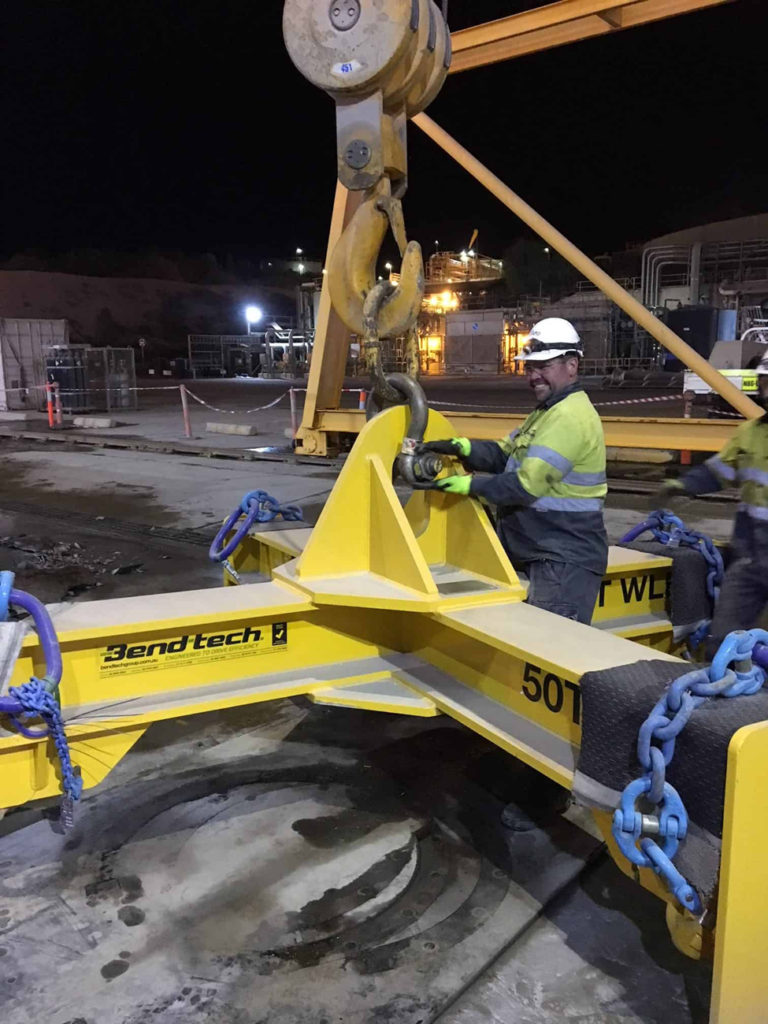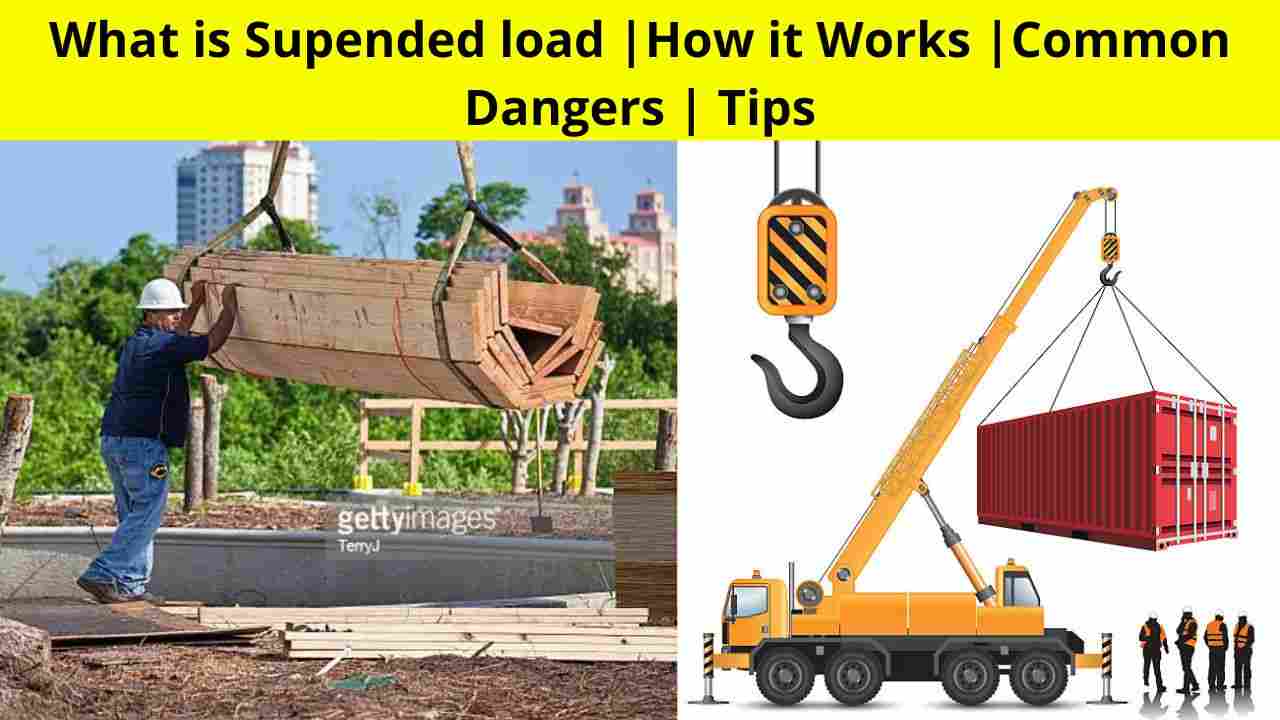In this article, we explained what is suspended load, How suspended load works especially in crane and other machinery, dangers during usage of suspension load and Precautions to avoid crane accident.
So please read the article till the end, and if you like please share with your friends. Lets Start
A safe working environment must be the prime goal of every project manager. This applies especially to construction sites that may face potential risks at any time. It has to meet the safety standards the OSHA sets in performing different tasks.
Worksites using a suspension load can be dangerous. Heavy materials might fall off and cause injuries among workers since the equipment is above ground level. Therefore, experts do not advise individuals to work underneath a suspension load without authorization.
Table of Contents
What is a Suspended Load?

Forklifts, cranes, and wheel loaders are a few kinds of loads that require a lifting device. The best equipment for such a job is a suspension load to keep them off the ground for a short period. It also carries pallets, slings, and many more tool pieces. This is a flexible tool and can handle both heavy and flat loads safely.
However, carrying heavier and larger loads can increase the danger in the workplace. It is a bit complex to stop objects from dropping. Proper installation is necessary to reduce failures, as well as regular device inspection.
Also Read: 7 Types of Crane Mostly Used in Construction
How Does Suspended Load Work?
Such a lifting device is very useful in moving materials on the worksite. The maximum load to carry will depend on the device but is ideal to handle even some machine parts.
Here are the factors to consider when doing a task under a suspended load:
1. Load Size and Weight
Determining the size and weight of the load will help operators use the device correctly. They can easily plan how to make the workplace safer once there is a concrete idea about the load. For instance, if the device is intended to carry huge and heavy objects, it could be better to establish a safe zone for the staff.
2. Work Assignments
A crowded worksite may trigger possible accidents, especially with the presence of a suspension load. Choose to assign a single person who will watch over the operation to ensure whether the load is stable or not. They must be well-trained to keep everyone in the work area safe all the time.
3. Proper Communication
Communication plays a vital role in using a suspension load. The operator will be working with ground personnel in lifting materials. Every move must be well-communicated to one another to make everyone aware. This helps to suspend any potential risk most especially around the fall zone. That is why assigning a worker with good communication skills to operate the load is essential.
Do You Know: Different Types of Access doors and Panels
4. Distance
Danger at construction sites is unpredictable. Each employee is at risk once a failure occurs when lifting objects. Hence, keeping a distance from the suspension load will prevent hurting the workers. It depends on the load size wherein the most desirable distance is a 10-foot radius from the hanging load. This is to give space in case the load falls or the device malfunctions.
The fall zone must increase in size every time the load gets higher. This will permit workers to do a task beneath the hanging object.
Common Dangers Using Suspended Loads
A suspended load is full of risk and can happen anytime. The most familiar case is when the lifted objects will fall on the ground which shall cause major damage.
Heavy loads won’t always result in severe damage but also minor injuries if they divide into pieces after a fall. These include sharp edges that may impact one’s eyes and other parts of the body made of soft tissues.
The rare case is when the suspended load causes an electrical shock due to a power line contact. Thus, it is vital to check the area before commencing load work.
Leaving the suspended load overnight is not an issue, as long as the operator remains in control of the unit. This means that its main focus is on the equipment and not on other tasks. There must also be an authorized person who cares if the operation is appropriate for the situation. Moreover, the lifting zone should be surrounded by barricades and other caution signs to notify every personnel of possible danger.
Tips to Avoid Crane Accidents
Mishaps upon using a suspended load often happen to men at work. It is because of the various tasks that they do even under the said equipment. Site casualties may occur, regardless of the operator’s expertise due to case-to-case scenarios. Nonetheless, workers’ safety is guaranteed with the following tips:
Also Read: What is Autoclaved Aerated Concrete
1. Stay Away From The Fall Zone
Casualty always takes place in the fall zone. Some laborers spend time in the area to do assigned tasks but this is not advisable. On the other hand, project managers should remind the workers not to stand under hanging objects and just execute the task away from the fall zone. Putting signs in the work setting will greatly benefit the workers.
2. Schedule Lifting Operations
Finding proper positions for crane operation must be done earlier. Estimate the area needed where workers can move around safely. And also, follow a timetable when to lift objects to give way to other workers.
Final Thoughts
Clearing up the workspace will enhance the suspended load safety during operation. The site can be unsafe if the employees are scattered near the fall zone. So, keep in mind the tips above to complete tasks safely.

I am a Professional Civil & Structural Engineer having more than 4 years of experience in Engineering, Procurement and Construction industry. Here i sharing the latest updates of EPC Projects and Construction News.


